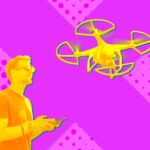
The Internet of Things (IoT) is a system of smart devices that interact with each other through the internet. IoT may involve many devices that share a network and generate, transmit, and process information with each other to effect a useful action. For example, with IoT, you can control your door lock with your mobile phone, adjust your lighting according to your moods automatically, and so much more. IoT, in simple terms, means the intelligent interactions of smart devices to make your life brighter.
Now, let’s look at the Agile framework. Agile is a set of principles that guided the software development industry in the past decade. The coming of blockchain, big data, IoT and other new technologies has opened new possibilities for Agile. Currently, it’s witnessing renewed opportunities in the management of the project at all levels.
The Agile principles help in faster delivery of deliverable products at every small cycle of development. Let’s look at what these Agile principles are before we move any further :
- Value individual and team interactions more than processes and tools
- Stress on working software over the consolidated document
- Collaboration with the customer rather than the negotiation of contract
- Responding to the situation rather than sticking to fixed plans
Any methodology that follows the above principles can be called Agile. Scrum is a popular Agile framework for software and mobile app development. However, criticism exists that Scrum is not Agile but fragile. But IoT and Agile can reinforce each other for a vibrant project team.
Understanding the Agile Practice
Agile methodology is iterative in practice. It divides the various stages into small pieces of incremental development, and they undergo iteration until the product meets customer expectations.
Let’s understand this through an example. Consider a mobile app development company. In creating a mobile app, five teams are essential: top-level managers, developers, designers, testers, and the sales and marketing team.
In a mobile app development cycle that uses the Agile framework, the first meeting starts with the client and the sales team. The sales team identifies the customer requirement and feasibility, and it arranges a meeting with the leading visionaries. The second round of meetings leads to the conceptualization of the business idea. The next stage involves analyzing the technical feasibility of the business idea with the developers. Once found feasible, the process of development begins incrementally and iteratively. The designers and testers all come up in each piecemeal development stage. At each level of development, a meeting with the client is held. This sums up a typical Agile process of mobile app development.
What Can IoT Add to Agile Development?
As we discussed, IoT is an interconnected network of smart devices that share and communicate with each other to intelligently coordinate activities. The smart device can act in two ways: pick up the data by parsing the environment or by analyzing the data in the network to operate. So, an IoT device can perform the function of a sensor and an actuator.
IoT can add value to the Agile development process in the following areas :
1. Participatory Production
One of the critical intentions of every development process is a workable product that fits its client’s imagination. Now, in a typical Agile team, the fundamental changes can be incorporated only after at least one sprint, i.e., one development cycle. A change then would mean loss of time and resources.
With IoT, things could be much different. The integration of simulation tools with clients and managers can improvise at the very point of creation. Live updating of designs and wireframes of a mobile application as the designer works on it can help in a participatory production process like never before in history.
2. Minimize Iteration Cycles
The natural consequence of a participatory production process is a successful review meeting. The involvement of the client at each stage of production means there’s hardly any divergence in the final product. It means fewer iterations and a faster delivery of the final product.
3. Enhance Creativity
No one likes to have the same meal thrice a day. Yet, developers, designers, and analysts have to see the face of particular projects again and again in iterative development cycles. Repetition is boredom, and boredom cannot inspire any creativity. That’s why projects that get struck hardly reach excellence in the hands of the same developers. So, IoT with Agile is a perfect formula for a creative workplace.
4. Smooth Internal Collaborations
Now, if we come back to our mobile app development example, we see that one of the main issues in the development of an app is the incompatibility of the code and design. Designers may go for unique ideas, and the developer may be in a fix to align to it, or vice versa. IoT devices like smart assistants can simultaneously analyze the design stage and coding to suggest complexity levels to warn designers and developers.
5. Steer Projects Rightly
IoT with a regular circulation of various teams’ progress can give a real-time projection to the managers. They can then quickly identify a team’s extent of understanding and make necessary interventions.
Agile Project Management Framework
All this and much more is possible with the harmonious integration of IoT and the Agile framework. The modern workplace is already employing video-conferencing, automated document management systems, workflows and much more. The Microsoft Graph and other tools envisage a tomorrow where workplaces will be dynamic and intelligent. IoT and Agile are decisive steps towards making this dream a reality.




 New Episode
New Episode





 Latest IoT News
Latest IoT News








